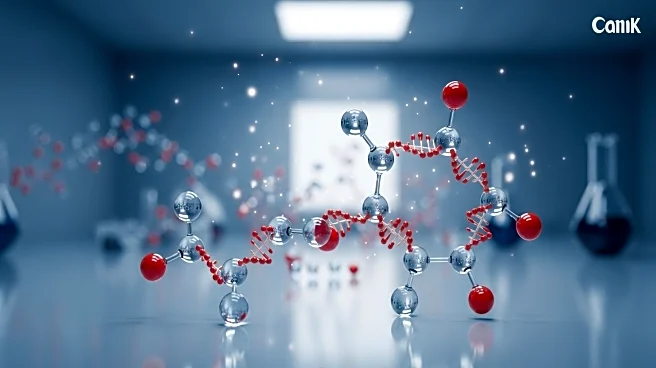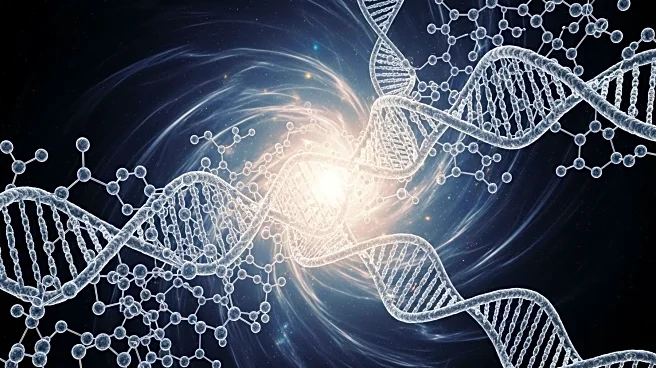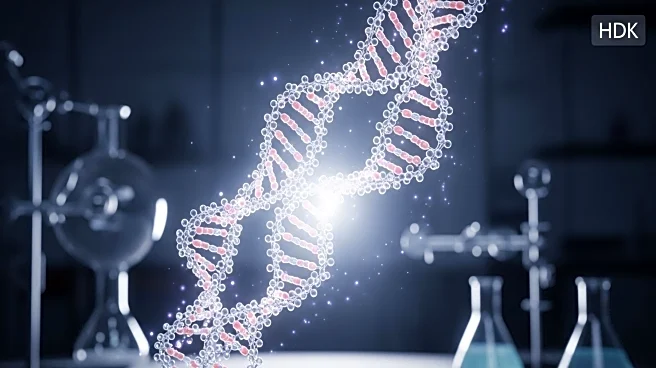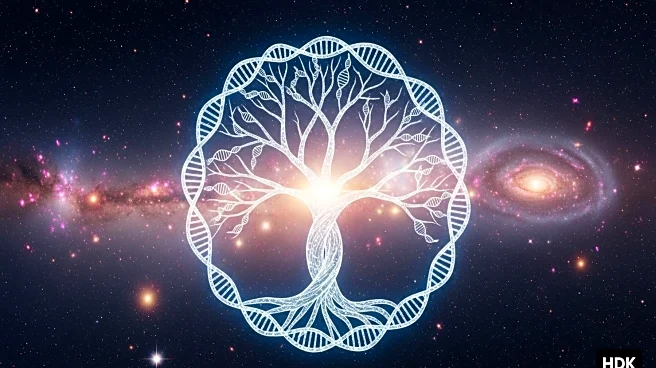What's Happening?
Chemists have successfully replicated a critical moment in the creation of life by joining RNA and amino acids under conditions similar to those on primordial Earth. This experiment, conducted by researchers at University College London, aims to provide insights into the origins of the relationship between nucleic acids and proteins. The study supports the RNA world hypothesis, which suggests RNA's role as a self-replicating nucleic acid capable of catalyzing chemical reactions. The research utilized thioesters as a mediator, a compound believed to have been abundant in early Earth's organic soup, to facilitate the binding of amino acids to RNA. This breakthrough unifies the RNA world and thioester world hypotheses, offering a potential explanation for the emergence of genetic code.
Why It's Important?
Understanding the origins of life is fundamental to comprehending biological processes and the development of life on Earth. This research could pave the way for advancements in synthetic biology, potentially leading to the creation of self-replicating molecules. Such developments may have significant implications for medicine, biotechnology, and our understanding of life's evolution. The ability to replicate life's building blocks could revolutionize how scientists approach the study of life's origins, offering new methods to explore and manipulate biological systems.
What's Next?
The next step in this research is to determine if RNA will preferentially bind to specific amino acids that facilitate the emergence of genetic code. This could lead to a deeper understanding of how life originated and evolved. Continued exploration in this field may result in breakthroughs in synthetic biology, potentially allowing scientists to create life-like systems from simple molecules. The implications of such advancements could extend to various scientific disciplines, including genetics, molecular biology, and evolutionary studies.
Beyond the Headlines
This research highlights the ethical and philosophical questions surrounding the creation of life in a laboratory setting. As scientists move closer to replicating life's origins, discussions about the implications of creating synthetic life forms become increasingly relevant. The study also underscores the importance of interdisciplinary collaboration in solving complex scientific problems, combining chemistry, biology, and evolutionary science to explore life's mysteries.











